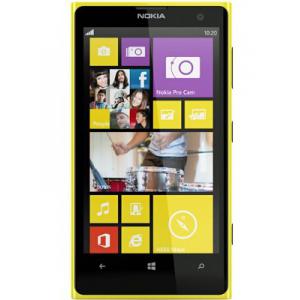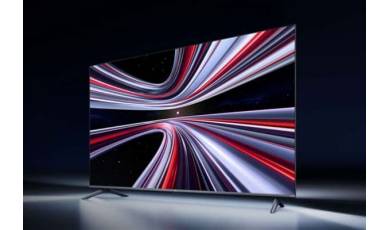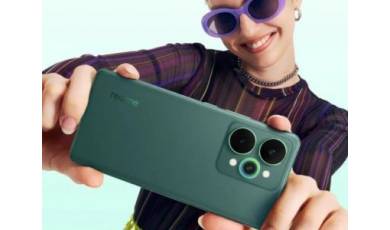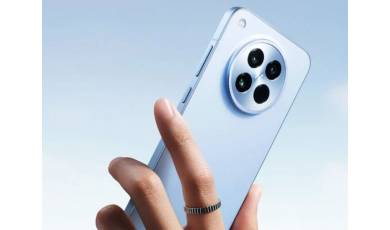Nokia EOS (Lumia 1020) specs.
Mobiles >> Nokia >> Nokia EOS (Lumia 1020)| Specifications | Reviews | Secret codes |
| Unlock phone | Root phone |

General Information Nokia EOS (Lumia 1020)
Launch Date:
July 26, 2013 (Official)
Also Known As:
Nokia Lumia 1020
Smart Phone OS: An operating system (OS) is software that interacts between a user and a smartphone.
An operating system (OS) is software that interacts between a user and a smartphone.
Windows Phone v8
SIM Slot(s):
Single SIM, GSM
SIM Size:
SIM1: Micro
Network:
3G: Available, 2G: Available
Body Nokia EOS (Lumia 1020)
Dimensions:
130.4 (H) x 71.4 (W) x 10.4 (T) mm
Weight:
158 grams
Colours:
Black White Yellow
Display Nokia EOS (Lumia 1020)
Screen Size: This diagonal display size is usually measured in inches.
This diagonal display size is usually measured in inches.
4.5 inches
Screen Resolution: Screen resolution refers to the size of the image received on the screen in pixels
Screen resolution refers to the size of the image received on the screen in pixels
768 x 1280 pixels
Pixel Density:
332 ppi
Display Type:
AMOLED
Touch Screen:
Capacitive Touchscreen, Multi-touch
Performance Nokia EOS (Lumia 1020)
Chipset: Is a set of chips in the smartphone that control the CPU.
Is a set of chips in the smartphone that control the CPU.
Qualcomm Snapdragon S4 Plus MSM8960
Processor:
Dual core, 1.5 GHz, Krait
Graphics:
Adreno 225
RAM: Random Access Memory
Random Access Memory
2 GB
Memory Nokia EOS (Lumia 1020)
Internal Memory:
32 GB
Expandable Memory:
No
Camera Nokia EOS (Lumia 1020)
Screen Resolution: Screen resolution refers to the size of the image received on the screen in pixels
Screen resolution refers to the size of the image received on the screen in pixels
41 MP
Sensor:
Back-illuminated sensor (BSI)
Aperture:
2.2 F
Flash:
LED Flash, Xenon Flash
Image Resolution:
7712 x 5360 Pixels
Camera Features:
3 x Digital Zoom, Optical Zoom, Face detection
Video Recording:
1920x1080 @ 30 fps
Screen Resolution: Screen resolution refers to the size of the image received on the screen in pixels
Screen resolution refers to the size of the image received on the screen in pixels
1.2 MP
Battery Nokia EOS (Lumia 1020)
Battery capacity:
2000 mAh
Type:
Li-ion
Not User Replaceable:
Yes
Talktime:
Up to 13.3 Hours(3G) / Up to 19.1 Hours(2G)
Connectivity Nokia EOS (Lumia 1020)
SIM Size:
SIM1: Micro
Network Support:
3G, 2G
SIM 1:
3G Bands: UMTS 1900 / 2100 / 850 / 900 MHz
2G Bands: GSM 1800 / 1900 / 850 / 900 MHz
3G Speed: HSDPA High-Speed Downlink Packet Access 42.2 Mbit/s , HSUPA 5.76 Mbit/s
High-Speed Downlink Packet Access 42.2 Mbit/s , HSUPA 5.76 Mbit/s
GPRS:Available
EDGE:Available
2G Bands: GSM 1800 / 1900 / 850 / 900 MHz
3G Speed: HSDPA
GPRS:Available
EDGE:Available
SAR Value:
Head: 0.76 W/kg, Body: 0.67 W/kg
Wi-Fi: Wireless lan technology
Wireless lan technology
Wi-Fi 802.11, a/b/g/n
Wi-Fi Features:
Mobile Hotspot
Bluetooth: Bluetooth is used to exchange data between nearby mobile devices.
Bluetooth is used to exchange data between nearby mobile devices.
v3.0
GPS: Global Positioning System
Global Positioning System
with A-GPS Assisted Global Positioning System, GLONASS
Assisted Global Positioning System, GLONASS GLObal NAvigation Satellite System
GLObal NAvigation Satellite System
USB Connectivity:
Mass storage device, USB charging, microUSB 2.0
Multimedia Nokia EOS (Lumia 1020)
FM Radio:
RDS, Stereo FM
Loudspeaker:
Yes
Audio Jack:
3.5 mm
Audio Features:
Dolby Digital, Dolby Headphone
Special Features Nokia EOS (Lumia 1020)
Other Sensors:
Light sensor, Proximity sensor, Accelerometer, Barometer, Compass, Gyroscope
Comments, Questions and Answers about Nokia EOS (Lumia 1020)
Ask a question about Nokia EOS (Lumia 1020)






